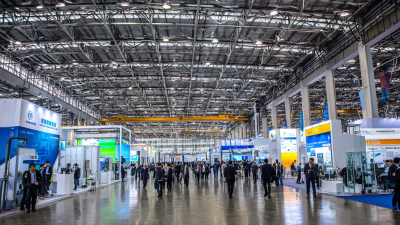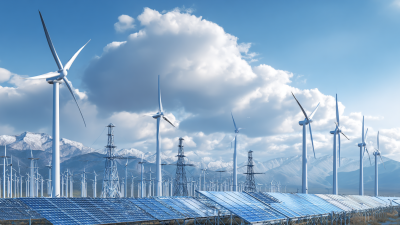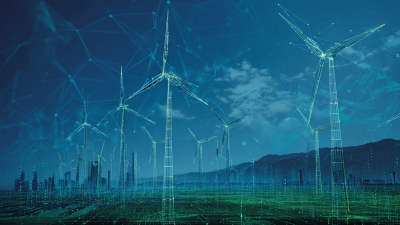Harnessing Wind Energy for a Sustainable Future Beyond Fossil Fuels
As the world grapples with the urgent need to transition from fossil fuels to sustainable energy sources, wind energy stands out as a promising solution. According to the Global Wind Energy Council's (GWEC) 2022 report, the global wind power capacity reached an impressive 936 gigawatts (GW) in 2021, with projections estimating a growth to over 2,000 GW by 2030. This rapid expansion is driven by increasing investments in renewable energy infrastructure and advancements in turbine technology, allowing for more efficient and cost-effective energy generation. Wind energy not only contributes to reducing greenhouse gas emissions but also enhances energy security and creates job opportunities in manufacturing, installation, and maintenance sectors. As governments and businesses prioritize sustainability, harnessing wind energy is crucial for building a resilient and eco-friendly energy landscape for the future.

The Economic Benefits of Wind Energy: Cost Comparison with Fossil Fuels
Wind energy has emerged as a viable alternative to fossil fuels, offering numerous economic benefits that cannot be overlooked. The cost comparison between wind energy and traditional fossil fuels shows a significant shift in the energy landscape. As technology advances, the installation and maintenance costs of wind turbines have dropped dramatically, making wind power increasingly affordable. In many regions, wind energy is now cheaper than coal and natural gas, providing an economically attractive solution for energy production.
Tips: When considering wind energy for your community or business, research local wind resources to determine potential energy output. Government incentives can also substantially reduce initial investment costs.
Moreover, the transition to wind energy not only contributes to cost savings through reduced energy bills but also fosters job creation within the renewable energy sector. As more investments flow into wind projects, there’s a growing demand for skilled workers in manufacturing, installation, and maintenance. This evolution not only supports local economies but also helps develop a sustainable energy infrastructure that can withstand future challenges.
Tips: Collaborating with local organizations can help improve public awareness of the benefits of wind energy, encouraging community involvement and support for new projects.
Cost Comparison of Wind Energy vs Fossil Fuels (in USD per MWh)
Global Wind Energy Capacity Growth: Trends and Future Projections
The global wind energy sector has witnessed remarkable growth in recent years, driven by technological advancements and increasing environmental awareness. As countries strive to transition away from fossil fuels, wind energy presents a viable solution to reduce greenhouse gas emissions. Current trends indicate that the global wind energy capacity is set to increase substantially, with projections suggesting a doubling of capacity by 2030. This momentum is fueled by investments in both onshore and offshore wind farms, as well as supportive governmental policies aimed at promoting renewable energy sources.
**Tips:** To harness the benefits of wind energy, individuals and businesses can consider smaller-scale installations like residential wind turbines. Additionally, staying informed about local regulations and subsidies can significantly enhance the feasibility of adopting wind power solutions. Collaboration with established developers can also streamline the process of integrating wind energy into existing infrastructures.
Looking ahead, the integration of advanced technologies such as AI and big data will further optimize wind energy production, making it more efficient and accessible. As nations set ambitious climate targets, the role of wind energy in the global energy mix will only become more prominent. Investing in infrastructure and research will be crucial to support this transition and to harness the full potential of wind energy for a sustainable future.

Impact of Wind Energy on Carbon Emissions Reduction and Climate Change
 Wind energy plays a crucial role in reducing carbon emissions and combating climate change. As one of the cleanest and most abundant renewable resources, harnessing wind power can significantly mitigate the impact of greenhouse gases released from fossil fuels. According to numerous studies, the transition to wind energy could lead to a substantial decrease in carbon dioxide emissions, thereby helping to stabilize global temperatures and reduce the frequency of extreme weather events associated with climate change.
Wind energy plays a crucial role in reducing carbon emissions and combating climate change. As one of the cleanest and most abundant renewable resources, harnessing wind power can significantly mitigate the impact of greenhouse gases released from fossil fuels. According to numerous studies, the transition to wind energy could lead to a substantial decrease in carbon dioxide emissions, thereby helping to stabilize global temperatures and reduce the frequency of extreme weather events associated with climate change.
Tips: To maximize the benefits of wind energy in reducing your carbon footprint, consider supporting local wind farms or advocating for the installation of wind turbines in your community. Additionally, you can educate yourself and others about the advantages of renewable energy, promoting a shift away from fossil fuel dependency.
Moreover, with advancements in technology, wind energy is becoming increasingly efficient and cost-effective. The integration of wind power into the energy grid not only supports cleaner air and water but also creates jobs in the renewable energy sector. As we invest in wind energy infrastructure, we pave the way for a more sustainable future, where energy generation is harmonious with our planet's ecological balance.
Tips: Explore incentives for home or business wind turbine installations and stay informed about government policies that promote renewable energy initiatives. Being an active participant in this shift can foster a community that values sustainability and environmental stewardship.
Technological Advancements in Wind Energy: Increasing Efficiency and Output
Recent advancements in wind energy technology have significantly enhanced the efficiency and output of wind turbines, making them a pivotal component in the transition towards a sustainable energy future. Innovations such as larger rotor blades and improved aerodynamic designs allow turbines to capture more wind energy, even at lower wind speeds. This not only increases the overall energy yield but also expands the geographic viability of wind farms, enabling them to be installed in previously unsuitable locations.
Moreover, the integration of artificial intelligence and machine learning in wind energy systems has paved the way for predictive maintenance and optimized energy production. These technologies analyze real-time data from turbines to anticipate maintenance needs and adjust operation settings for maximum efficiency. By leveraging these advancements, the wind energy sector can significantly reduce operational costs and enhance reliability, positioning it as a more attractive alternative to fossil fuels and contributing to a cleaner, greener future.
Job Creation and Economic Opportunities in the Wind Energy Sector
The transition to wind energy is not only pivotal for environmental sustainability but also a driving force for job creation and economic growth. According to the Global Wind Energy Council (GWEC), the wind energy sector employed over 1.3 million people worldwide in 2020, and this number is projected to grow rapidly as nations advance their renewable energy initiatives. The U.S. Bureau of Labor Statistics anticipates that jobs in wind turbine technology could grow by 61% between 2019 and 2029, making it one of the fastest-growing job markets in the country.
The deployment of wind energy is expected to stimulate local economies, particularly in rural areas where wind farms are often located. A report by the American Wind Energy Association (AWEA) highlights that the wind sector contributed over $20 billion in private investment in the U.S. in 2020 alone. Additionally, every megawatt of installed wind capacity creates approximately 1.5 jobs in manufacturing, installation, and maintenance. Such investments not only bolster the job market but also foster a new industry with connected services, ultimately supporting a comprehensive economic ecosystem geared towards a sustainable energy future.
Harnessing Wind Energy for a Sustainable Future Beyond Fossil Fuels - Job Creation and Economic Opportunities in the Wind Energy Sector
| Dimension | Current Data (2023) | Projected Data (2025) | Growth Rate (%) |
|---|---|---|---|
| Total Wind Jobs | 130,000 | 180,000 | 38.5% |
| Investment in Wind Energy | $50 billion | $70 billion | 40% |
| Installed Wind Capacity (GW) | 130 | 160 | 23.1% |
| CO2 Emissions Reduction (Million Tonnes) | 90 | 120 | 33.3% |
| Economic Contribution (Billion $) | 20 | 30 | 50% |
Related Posts
-

Wind Farm Energy Innovations at 2025 China Import and Export Fair: Harnessing a $1 Trillion Industry
-

Exploring Alternative Energy Innovations at the 138th Canton Fair 2025: A Data-Driven Insight
-

Exploring Sustainable Energy Innovations at 2025 China 138th Canton Fair
-

What is Energy Solutions and How They Impact Global Sustainability Efforts
-

Unlocking Efficiency: Innovative Strategies for Project Management in the Energy Sector
-

Harnessing Smart Grid Energy Innovations at the 2025 China Import and Export Fair

